It’s Greek (and fascinating) to me
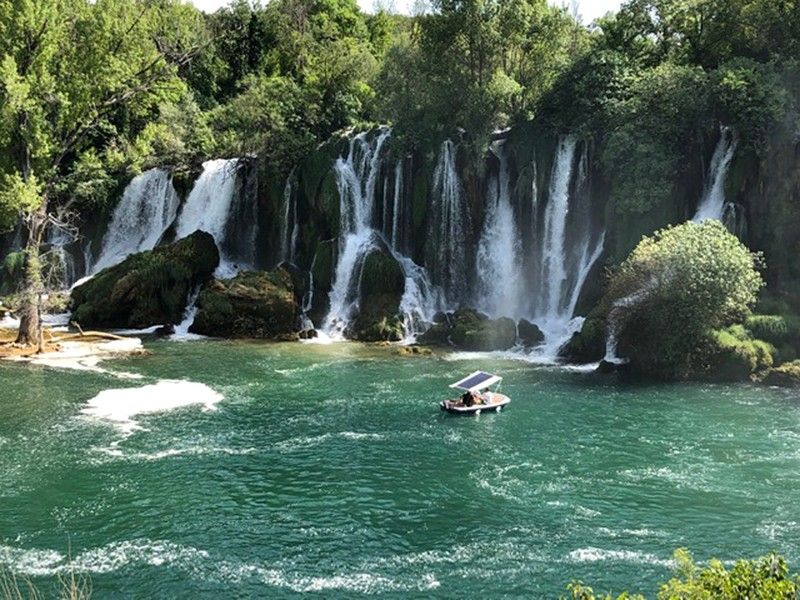
Skorpios (population: 5), the private island once owned by Aristotle Onassis, is now owned by a Russian lady, Ekaterina Rybolovleva.
A small sea vessel makes visiting less-traveled islands a pleasurable experience. For seven days and through three seas (the Adriatic, the Ionian, and the Mediterranean), we sailed from Dubrovnik, passing through Montenegro, some lovely islands in Greece, before ending in Athens.
From Dubrovnik, Noji Alindogan, our son-in-law, hired a Croatian driver and van to make a side trip to Medjugorje, Kotor and Mostar, places in Bosnia and Herzegovina. We had to bring our passports to exit Croatia, drive a kilometer or so, present our passports to enter Bosnia and Herzegovina. Returning to Dubrovnik, we had to do the same thing, only backwards. Funny, the immigration officer at Bosnia and Herzegovina told us that he had no record of our entry on the computer. Thank goodness our driver, who by now was driving a borrowed van of his friend (his own van broke down), was able to provide an acceptable explanation.
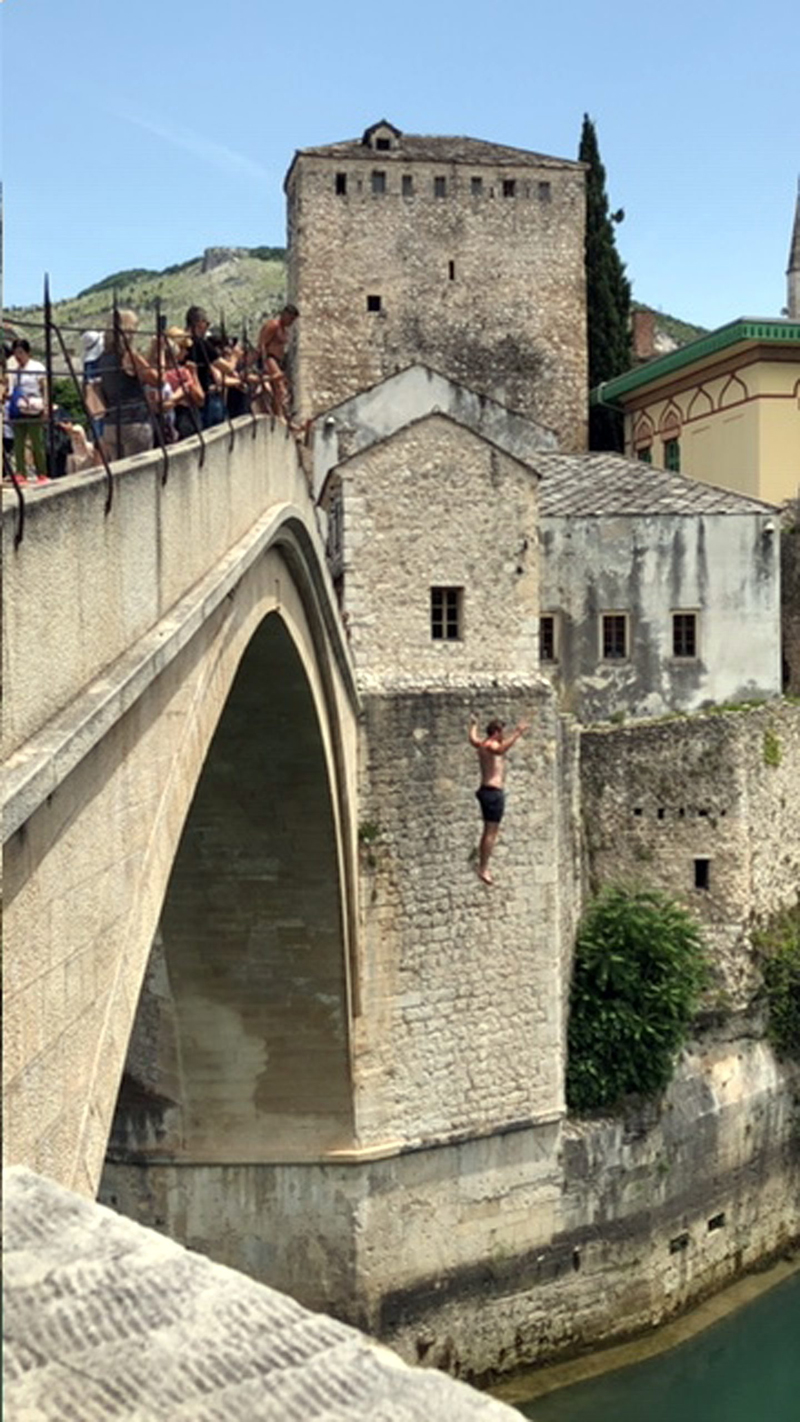
Mostar, a city in Bosnia and Herzegovina, straddles the Neretva River. The Stari Most (Old Bridge) is a medieval bridge. The diver will only jump if he collects 30 euros from tourists.
Montenegro, located in the Balkan Peninsula, used to be a part of Yugoslavia. It is now an independent country with a population of 650,000 people, waiting to be a part of the EU. The Venetians named the place Montana Negra because 70 percent of Montenegro is made up of mountains. Kotor, a UNESCO World Heritage site, is a medieval town built by the Venetians.
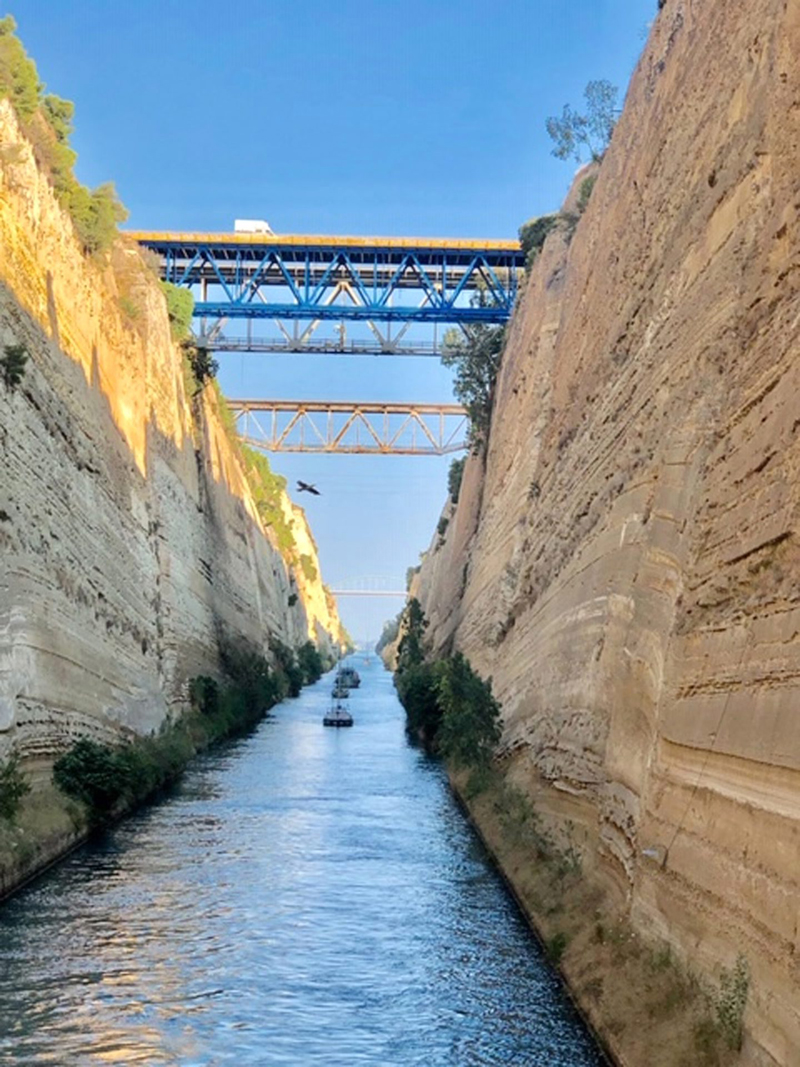
The Monastery of Paleokastritsa (1225), dedicated to Panagia (the Virgin Mary), is a Greek Orthodox monastery. It is said that this is the place where Odysseus met Nausicaa. As the locals say, “Stay in Corfu, fall in love.”
Tourism is its major industry with Europeans visiting its 292 kilometers of coastline, dotted with marinas (a favorite of luxury yacht owners) in the summer and its ski resorts in the winter. It has 930 hectares of contiguous vineyards, with 69 varieties of grapes. They have the equivalent of grappa, called rakija or firewater, their national drink, which is offered to welcome guests at any time of the day.
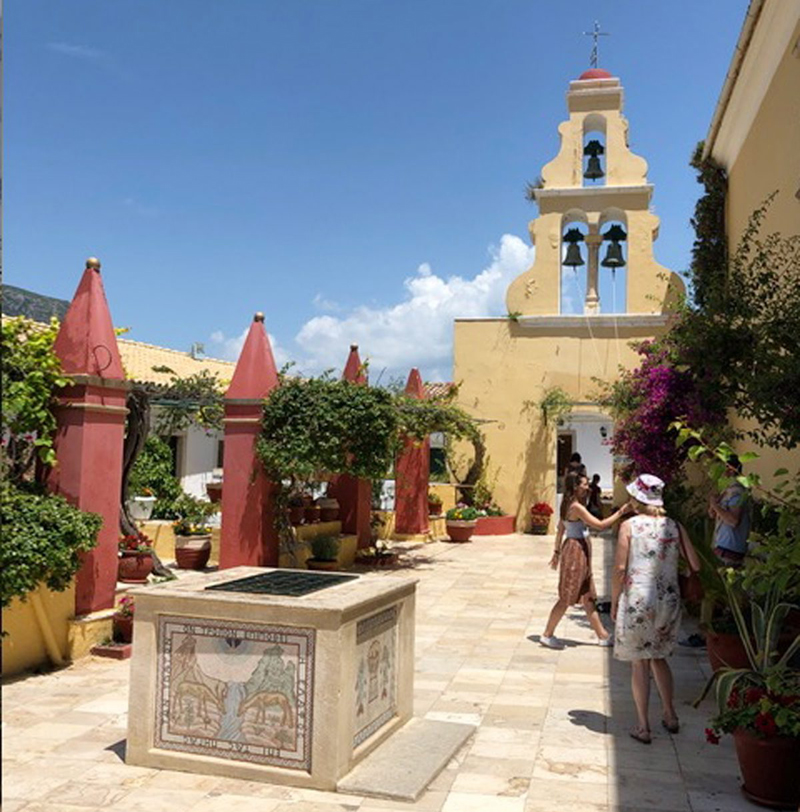
It took all of 45 minutes to go through the narrow Corinth Canal, which connects the Gulf of Corinth to the Saronic Gulf on the Aegean Sea. It is 6.4 kilometers long and 21 meters wide. Only small, narrow vessels can go through.
Olive trees are a long-term investment. It takes seven to eight years for a tree to be commercially productive, an effort done by the first generation, with later generations reaping the fruit. We were told that there is a 300-year-old olive tree that is still productive.
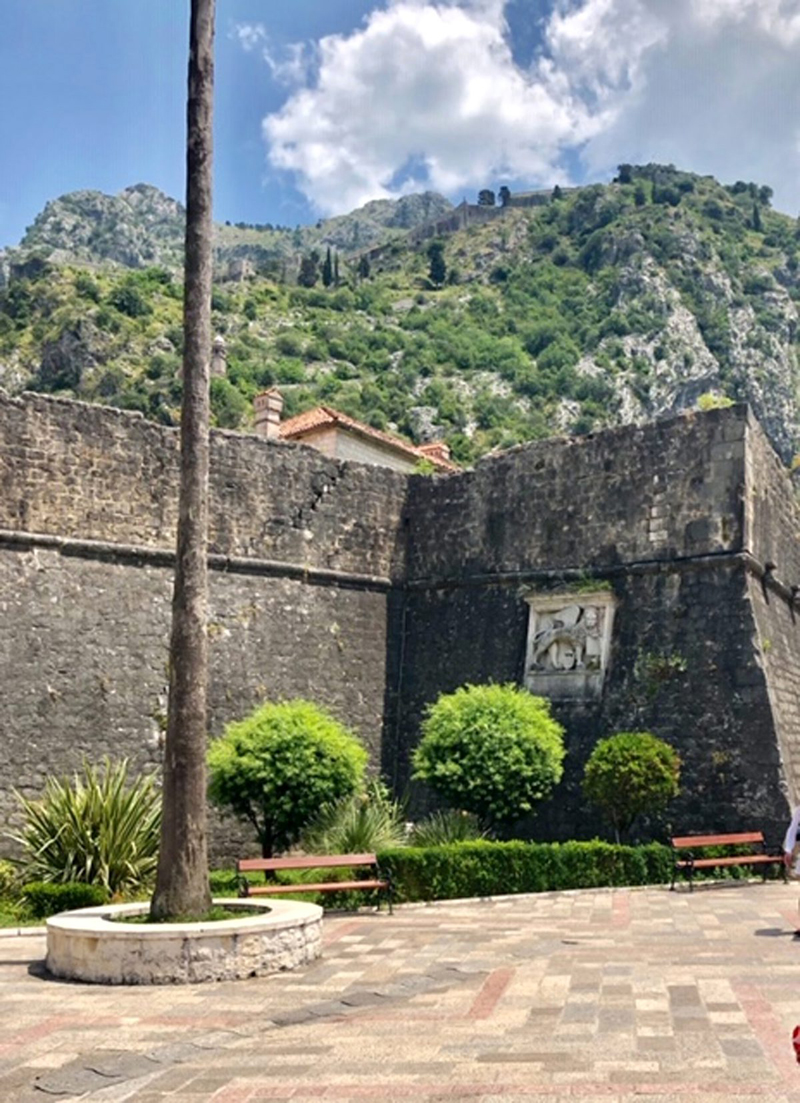
Kotor is a well-preserved, medieval, fortified town of traders and seamen, founded by the Venetians. On the wall is Saint Mark’s lion carrying an open book. This means that peace reigned in the place. Noting numerous cats lazing in the sun, we were told that when cats drink the water in the place, the water is good for humans as well.
Crescent-shaped Corfu was under Venetian, French and British rule before it became a part of Greece in 1864. The Greeks arrived from Corinth 2,700 years ago and landed in Kérkira, (island of oak trees), which became a city-state at the end of the 5th century. It was under the Roman Empire in the 3rd century. By the 6th century, the Goths raided and burned Kérkira. The survivors rebuilt the place and called it Corfu (place of pigs.)
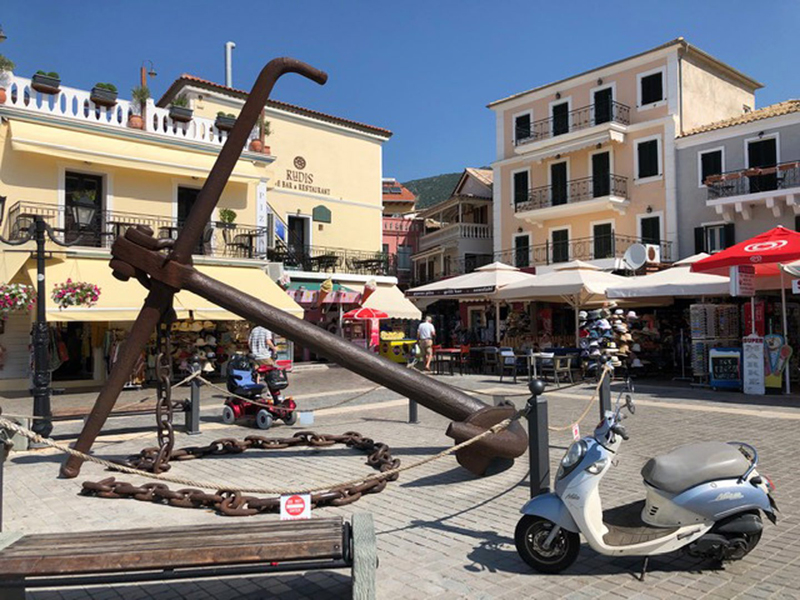
Parga lies on the Ionian coast. The plaza displays its maritime affinity.
Listening to our guides’ stories felt like a blast from textbook past. Corfu or Kérkira is the island where Odysseus (Ulysses) met Nausica, the daughter of king Alkinoos. In mythology, Korkyra was a beautiful nymph. Poseidon fell in love with her, kidnapped her and gave her an island. Jason (with his Golden Fleece) visited the island and there he met and married Media. It is said that a marriage blessed with Corfu’s spring water is forever.
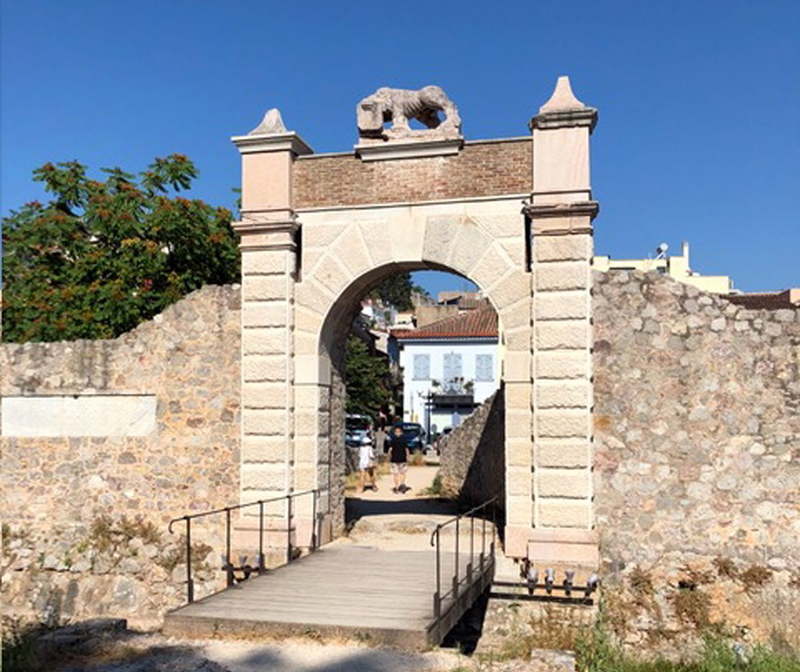
Náfplion is called the Venice of Greece, without the canals. The Lion’s gate dates back to the Bronze Age. The huge stones around it are called “Cyclopean,” since locals believe that they could have been built by one-eyed Cyclops. Inside the town are many shops, bakeries, gelato stores and fish restaurants.
Lefkada is called White Island because of its limestone mountains. Nydri, a town in Lefkada, is supposed to have one of the 10 most beautiful beaches in Greece. In the 15th-century BC, it was an important Mycenaean settlement, the access to Italy via the Ionian Sea. In 7th century BC, the Corinthians dug a canal to separate it from mainland Greece, for defense. Myths link the island to Aphrodite, to Odysseus, and to Homer’s Ithaca.
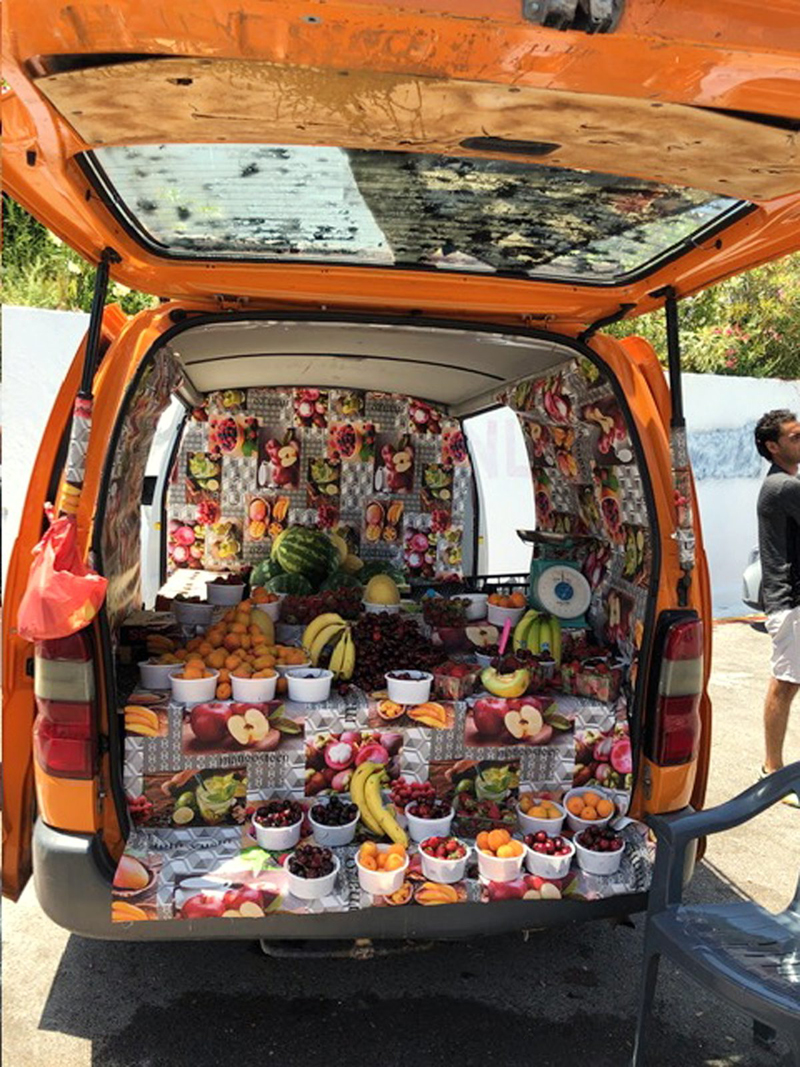
Ready for the tourists: An ingenious display of summer fruit
A part of Lefkada is Skorpios (population: 5), the private island once owned by Aristotle Onassis and now owned by a Russian lady, Ekaterina Rybolovleva.
Ninety-five percent of the population belongs to the Greek Orthodox religion. The Paleokastrista Monastery in Corfu, founded in 1225, is dedicated to Panagia (the Virgin Mary). The Monastery of Faneromeni in Lefkada, is said to have been started by the disciples of Saint Paul. Sosion, the founder of the monastery, was ordained as its first Bishop. The locals believe that Saint Paul may have visited the place.
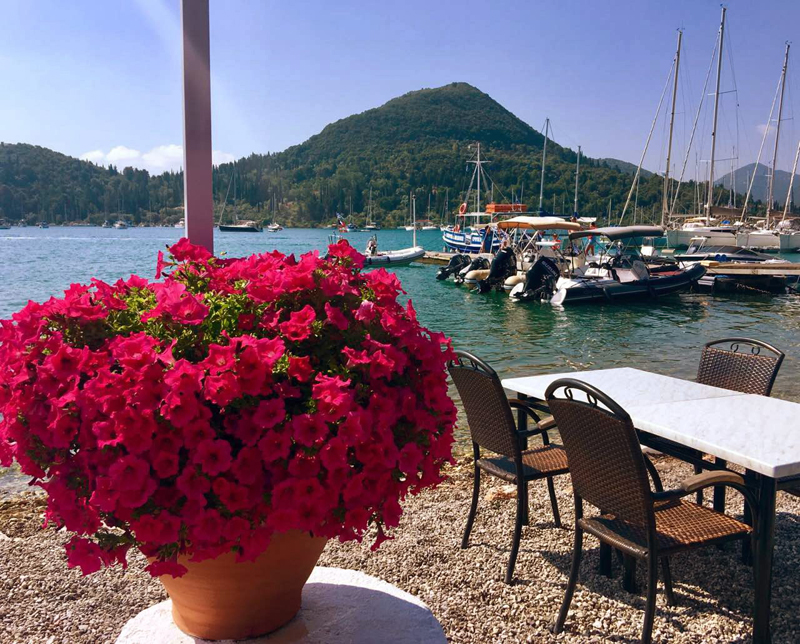
Nydri, a town in tiny Lefkada island, between the Ionian Sea and mainland Greece. We were told that the island could be Homer’s Ithaca, supposedly Odysseus’ home, which took him 10 years to reach. Sailing from one small Greek island to the next offers an overload of beautiful views. But more than that, one gets the impression that ancient history and mythology are deep within the DNA of the locals. (Photo courtesy of Corlu Caparas).
Our boat was small enough to use the Corinth Canal, which connects the Gulf of Corinth with the Saronic Gulf in the Aegean. It is 6.4 kilometers long and only 21 meters wide. The crossing takes about 45 minutes, with a tugboat pulling our vessel. The construction of the current canal was started in 1881 and was finished by 1893. In the ancient times, Roman rulers’ plans to cut through the isthmus went awry, confirming the prophecy that anyone who did so would be met by illness: Julius Caesar, Caligula, and Nero were assassinated and the project was abandoned. On the Corinth Canal is found a memorial left by Nero’s workers: a relief of Hercules.
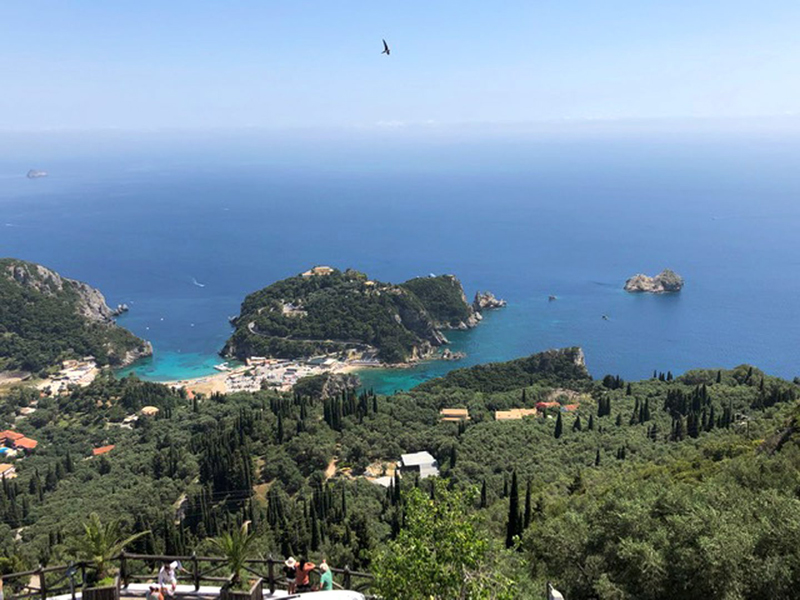
The Bay of Paleokastrista. The locals say that the tiny rock at the top left is the petrified ship of Odysseus.
It is said that you can visit Hydra with an empty suitcase, and leave with a full one. There are a lot of shops on the harbor that sell beachwear, tee shirts, ceramics, art, and jewelry. By law, cars and motorcycles (except for garbage trucks and water taxis) are not allowed. Horses, mules, and donkeys provide transportation within the island.
Náfplion claims to be the Venice of Greece without the canals. What is left of the old gate bears an image of the Venetian lion, more evidence of the glory of the empire. The first head of state, Ioannis Kapodistrias (our guide called him Johnny), made it the capital of modern Greece in 1829. The Greeks in the south did not want to pay taxes and assassinated him after two years. King Otto moved the capital to Athens in 1834.
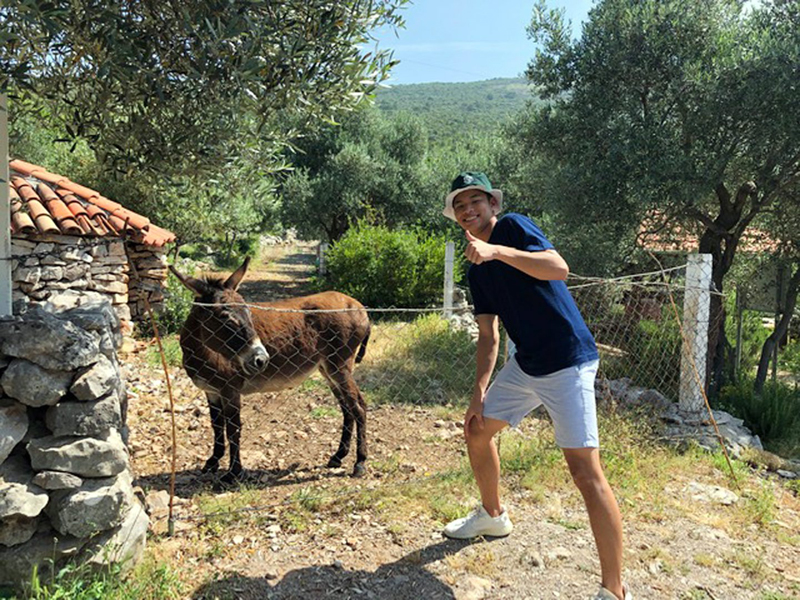
Martin Alindogan and friend at an olive grove in Kotor, Montenegro. Olive trees are a long-term investment to be reaped by later generations. While it takes seven to eight years for an olive tree to bear good fruit, there is a 300-year-old olive tree that is still productive. Lessons learned: good olive oil should taste peppery when swallowed and must be consumed within18 months, no longer.
Sailing from one island to the next is a visual overload of turquoise waters and backdrops of verdant mountains, of Venetian gates and remnants of fortresses, towns perched on hills or nested on craggy coastlines. But more than that, it is the impression that ancient history and mythology are deep within the locals’ DNA. And we mere mortals can only read about it.



















